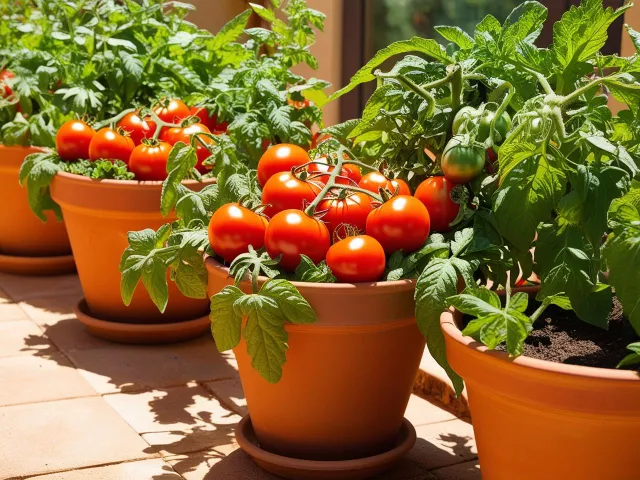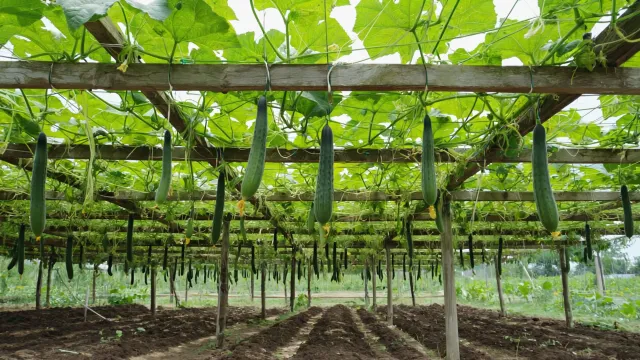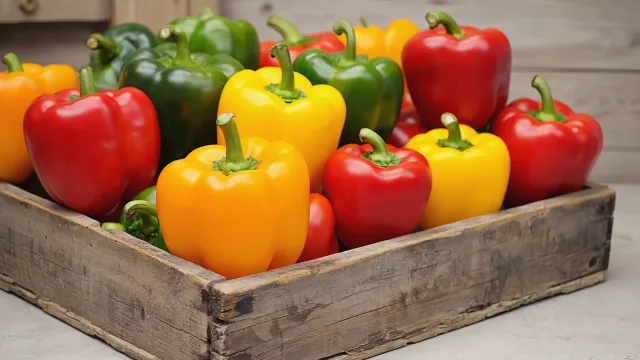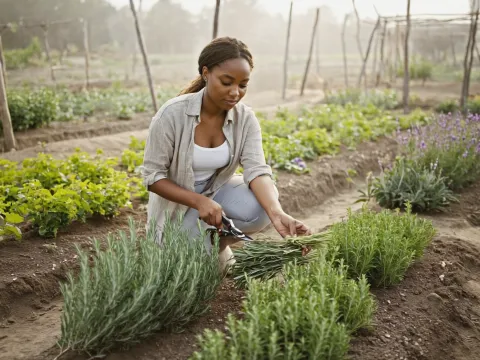Published on May 24, 2025
Last updated: May 24, 2025 · ⏱ 4 min read
How to Grow Juicy Tomatoes in Pots — No Backyard Needed

The Joy of Growing Tomatoes in Containers
If you’ve ever bitten into a fresh, juicy tomato straight from the vine, you know how delightful and satisfying it can be. For those living in apartments, homes with limited yard space, or anyone looking to add a little greenery to their outdoor areas, container gardening is an ideal solution. Growing tomatoes in pots allows you to cultivate this beloved fruit without the need for expansive garden beds. With some basic knowledge and a bit of care, you can enjoy homegrown tomatoes right from your balcony, patio, or even your kitchen windowsill.
Choosing the Right Containers
The first step in your container gardening journey is selecting the right pots for your tomato plants. Not all containers are created equal, so it’s essential to choose wisely. Look for pots that are at least 5 gallons in size. This provides enough space for the tomato's root system to develop properly. Consider using materials like plastic, wood, or ceramic. Each has its benefits: plastic pots are lightweight and retain moisture well, while terracotta pots allow for good air circulation but may dry out faster.
Ensure your containers have drainage holes at the bottom. Good drainage is crucial to prevent waterlogging, which can lead to root rot. If you find a pot you love but it lacks drainage, you can create your own by drilling holes. Additionally, you might consider using self-watering containers. These can help maintain consistent moisture levels, reducing the need for frequent watering.
Selecting Tomato Varieties for Containers
When it comes to choosing tomato varieties, not all are suitable for container gardening. Opt for determinate or dwarf varieties, as they grow to a manageable size and are well-suited for pots. Some popular varieties include 'Patio Princess', 'Tiny Tim', and 'Tumbling Tom'. Determinate tomatoes tend to grow to a certain height, making them perfect for smaller spaces, while indeterminate varieties continue to grow and produce fruit throughout the season but require more support.
If you’re feeling adventurous, try heirloom varieties for unique flavors and colors. Keep in mind the growing conditions, as some varieties may require more sunlight or specific soil types. Researching each type will help you make informed decisions that suit your gardening space and preferences.
Choosing the Right Soil for Your Tomatoes
The soil you use can significantly impact the health and productivity of your tomato plants. Standard garden soil isn’t the best choice for container gardening, as it can compact easily and drain poorly. Instead, use a high-quality potting mix designed for container plants. These mixes often contain ingredients like peat moss, perlite, and vermiculite, which enhance drainage and aeration.
Consider adding organic matter, such as compost, to enrich the soil further. This not only provides essential nutrients but also helps retain moisture. A well-balanced potting mix will ensure your tomatoes have the best chance to thrive, so don’t skimp on quality.
Watering Your Container Tomatoes
Watering is one of the most critical aspects of growing tomatoes in containers. Unlike garden beds, pots can dry out quickly, especially during hot weather. It’s essential to check the soil moisture regularly. Stick your finger about an inch into the soil; if it feels dry, it’s time to water. Aim to keep the soil consistently moist but not waterlogged.
When watering, do so thoroughly until you see water draining from the bottom of the pot. This ensures that the entire root ball is adequately hydrated. In hot climates or during peak summer months, you may need to water daily or even twice a day. Consider using mulch on the surface of the soil to help retain moisture and regulate temperature.
Fertilizing Your Tomatoes
Tomatoes are heavy feeders, requiring a steady supply of nutrients to produce fruit. Start with a slow-release fertilizer when you plant your tomatoes. Look for a balanced fertilizer, such as one with an N-P-K ratio of 10-10-10. As your plants grow, you can switch to a fertilizer higher in phosphorus, which promotes blooming and fruit set. A ratio of 5-10-10 is often recommended for this stage.
Be cautious not to over-fertilize, as this can lead to lush foliage with fewer fruits. Follow the package instructions for application rates and frequency. Regular feeding every four to six weeks can help maintain healthy growth and maximize your tomato harvest.
Providing Support for Your Tomato Plants
Depending on the variety you choose, your tomato plants may need support as they grow. Indeterminate varieties, which can reach heights of six feet or more, will need stakes, cages, or trellises to keep them upright and allow for better air circulation. This not only helps prevent disease but also makes harvesting easier.
For container gardening, choose lightweight supports that can easily fit within your pot. Tomato cages are a popular option, or you can use bamboo stakes tied with garden twine for a more DIY approach. Ensure the support is installed early in the growing season to avoid damaging the roots later on.
Pest and Disease Management
As with any gardening endeavor, pests and diseases can pose challenges while growing tomatoes in containers. Common pests include aphids, whiteflies, and spider mites. Regularly inspect your plants for signs of infestations. If you spot any pests, you can use insecticidal soap or neem oil as organic solutions to keep them at bay.
For diseases, maintain good air circulation and avoid overhead watering to prevent fungal issues. If you notice any yellowing leaves or unusual spots, remove affected foliage immediately to stop the spread.

Written by Soufyan from GrowToGrub
Soufyan is a gardening educator and founder of GrowToGrub. Through simple guides, easy recipes, and practical life hacks, he helps everyday growers turn small spaces into sustainable, delicious, and chemical-free living.


